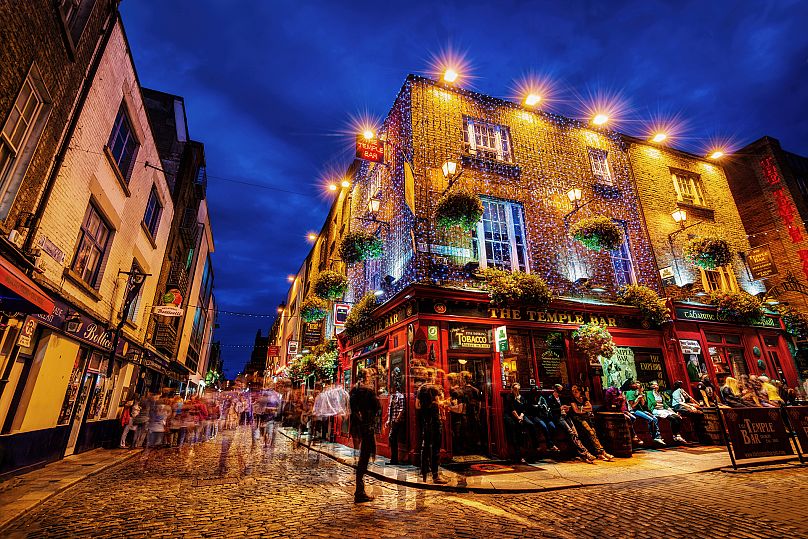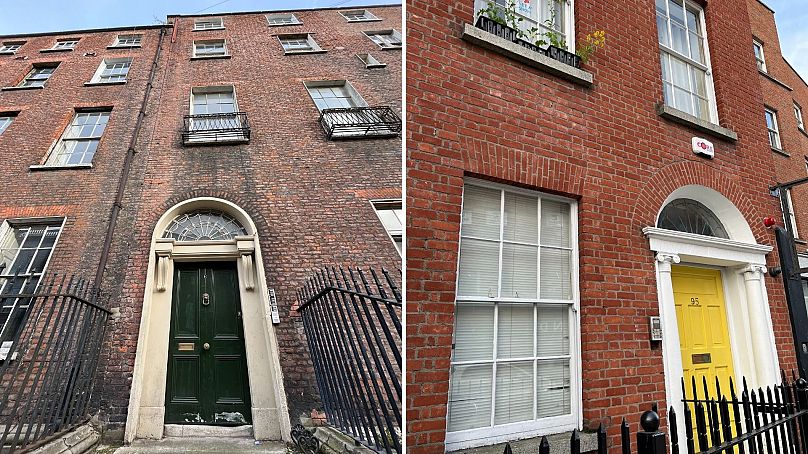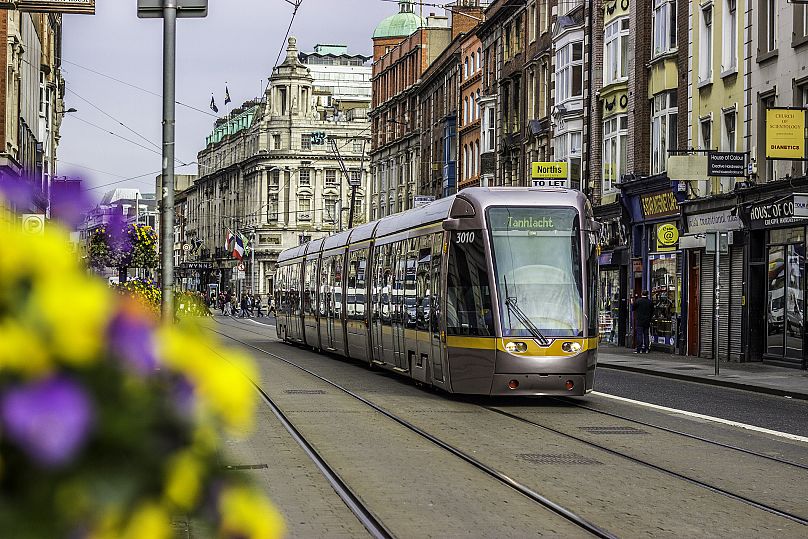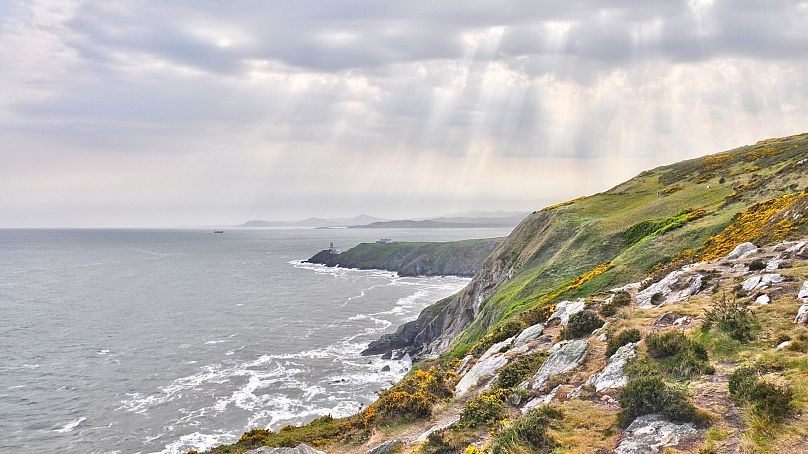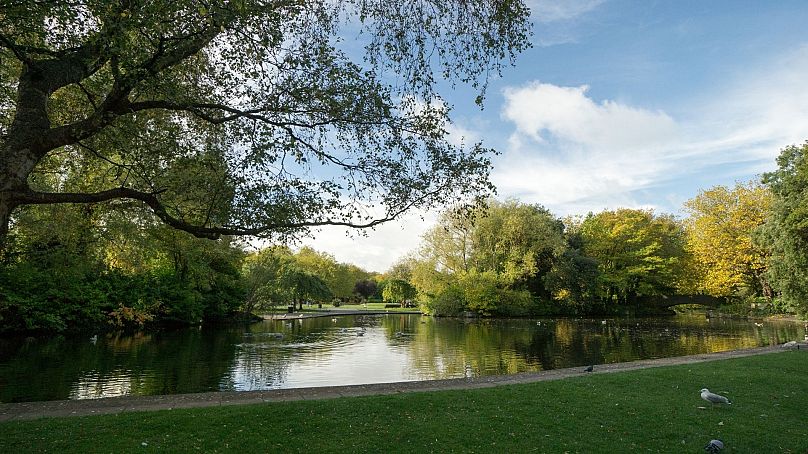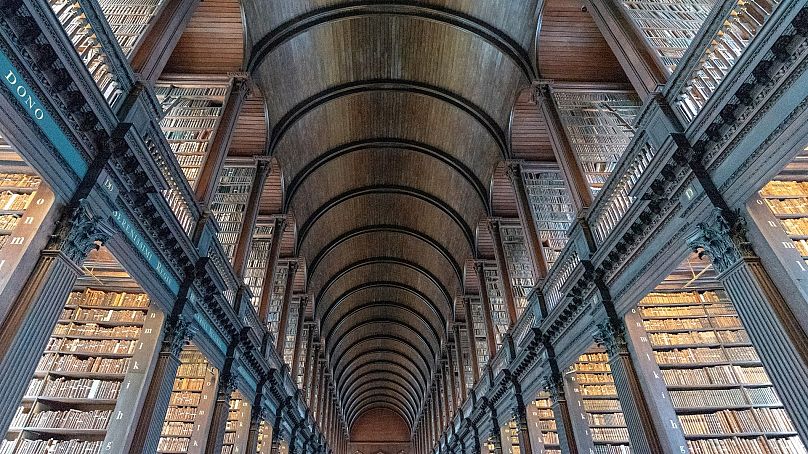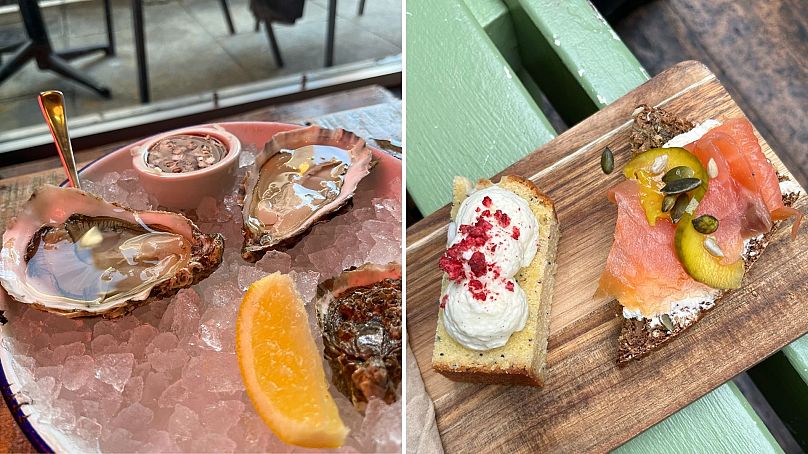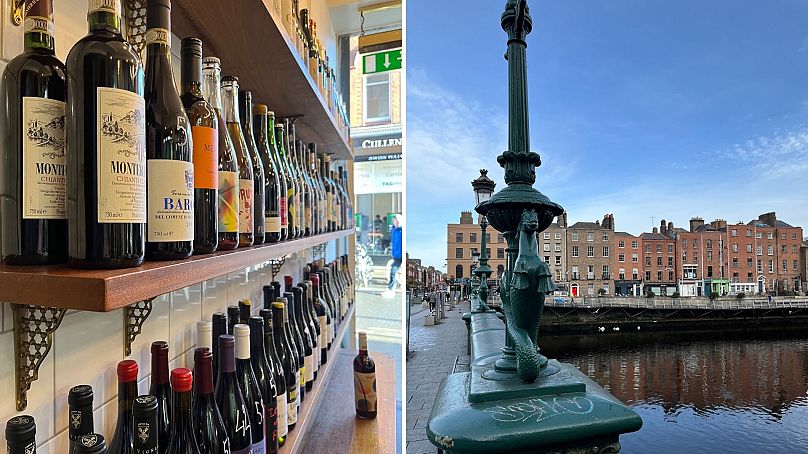From the Guinness to the museums, here's everything you need to know to find the magic in Dublin.
Dubliners are famous for their dark humour, their irreverence and their Guinness. And on a whirlwind weekend sojourn, I got to experience the people and the place firsthand. From the friendly pub landlords and witty shop assistants to the long line of chocolate coloured pints lining the bars - it’s a city with so much character.
You’d never be bored in Dublin, there’s simply too many people to talk to.
Ambling around the city is a joy to behold. The air is fresh, there are parks around every corner and the architecture is Georgian. There are 24 bridges that take you over to the other side of the city, across the River Liffey. It’s like Paris in that way - the relationship between the Left Bank and the Right Bank echo the Southside, the affluent part of Dublin, and the edgier, more modest Northside.
While the majority of my time was spent on the Southside, and therefore most of my recommendations are based there, the Northside is not to be disregarded.
This side of the river is home to some of Dublin’s most exciting food, with a diverse array of cafes and restaurants, as well as tourist attractions like The Irish Emigration Museum (EPIC) and the illustrious Dublin Writers Museum.
My favourite road on the Northside is Henrietta Street, which is filled with grand, red brick houses that date back to the 1720s. Henrietta Street is the most intact collection of early to mid-18th century houses in Ireland. Nowadays, it’s got a creative feel to it, and is home to the studios of several award-winning Irish artists.
But the magic of Dublin also lies in its after hours scene. It’s a city that really comes alive at night.
Out wandering the vibrant streets of Temple Bar and Grafton Street, merriment is everywhere you look. Co-workers are enjoying an after work pint and tend to hang around ‘smirting’ - which I’m told is almost an official term among locals. It’s a mashup of smoking and flirting - apparently something young Dubliners are experts at.
So what are the best things to do, where should you stay, eat, drink, party? Here’s everything you need to know for a more alternative city break.
First of all, what are the COVID restrictions?
Ireland has abolished all COVID-19 entry restrictions from 6 March. That means travellers who plan to enter are no longer subject to tests nor do they have to show proof of vaccination or recovery.
The legal requirement to wear a face covering no longer applies either, as of 28 February.
Although, you should continue to wear a mask on public transport and in healthcare settings.
How do you get around Dublin?
Dublin is a city built for walking which, hailing from London, is a welcome change. It’s not very big at just over 45 square miles in total. But, as the capital, it’s still the most populated city in Ireland - the only one with more than 1 million people.
It doesn’t feel crowded though, which is why walking around is so enjoyable. There are swathes of narrow streets to discover and cycling lanes too.
All around the city there are bike rental docks called DublinBikes - you just need to download an app to access the self service and away you go for the rest of the day.
But if you’d rather opt for public transport, there is always the Luas - an electric tram with two lines, green and red. The name Luas is the Irish word for speed. It’s cheap, cheerful and glides through the city in an environmentally-friendly way.
Finally, there is the DART - if you’re up for a more adventurous day trip. The DART is an electric train that travels from the city centre into the outskirts of Dublin and along the coastline.
The views are beautiful as you pass Blackrock and down to Bray, with wide beaches stretched out in front of you and the wild Irish Sea beyond.
You can also travel all the way out to Howth, a beautiful seaside village with one of the most famous cliff walks in Ireland.
What are the best parks in Dublin?
At first glance, Dublin seems like a rather urban city, but you soon find there are plenty of leafy squares and parks to explore. St. Stephens Green is the most famous park in Dublin. It’s just next to Grafton Street, one of the busiest shopping streets in the city, and is a quiet spot to have a sit down after a busy day in town.
There are flower beds in bloom all through Spring and a lake with mallards, swans and moorhens gliding by on the glassy surface.
Aside from ‘Stephens Green’, as the locals call it, you can’t miss the enormous Phoenix Park which is 1,750 acres and even houses the Dublin Zoo - the largest urban park in Europe.
The Irish National War Memorial Park is another tranquil setting to have a walk around, as is the National Botanic Gardens and St. Anne’s Park on the Northside, which features a classical Chinese garden.
My personal favourite is the Iveagh Gardens, which is a bit of a hidden gem.
It’s not far from Stephens Green, but is much much quieter and more petite, despite being in such a central location. It’s perfect for a picnic with family or simply a lunchtime stroll. There is even a rose garden and a small waterfall too.
What are the best places for history lovers?
Dublin boasts a rich history, having been originally founded by the Vikings in 841 AD. Obviously, it’s changed a lot since then, but remains Ireland's principal city and the cultural, educational and industrial centre of the island.
One of the most interesting museums any history lover will appreciate is EPIC, The Irish Emigration Museum, located in Dublin's Docklands. It tells the story of the Irish diaspora and emigration to other countries in a modern, digital environment.
It’s a fully interactive experience to walk through the museum, where you uncover the dramatic and inspiring stories of Irish people who travelled the world, reliving some of their greatest achievements in music, literature, sport, politics, fashion and science.
The Little Museum is another little jewel you have to visit while you’re there. It’s a whistle stop tour of the alternative, weird and wonderful side of Dublin - and is very quirky. Make sure you get one of their guided tours with a resident history expert to get the most out of it.
I learnt that Che Guevara was actually Irish (who knew?), all about the history of the bands U2 and Thin Lizzie and that the first elected female MP in the UK was Irish.
The last thing I’d say is make sure you leave time for the Book of Kells at Trinity College’s Long Room. What you’re visiting is the oldest living bible in existence - which is extravagantly illustrated and adorned with beautiful peacock symbolism. Peacock flesh doesn’t decay, so that’s why it is associated with Jesus and the resurrection.
Trinity College itself is very regal, akin to Oxford or Cambridge in the UK, and the Long Room (which houses the Book of Kells) is the reason you visit. It’s 64 metres long and looks like a corridor, full of thousands of books which students still reference today. There are 38 marble busts of both classical and modern figures - and the atmosphere is eerie and dimly lit as window blinds protect the ancient books from the sun.
It is often called “the grandest room in Ireland”.
Where are the best places to eat in Dublin?
I couldn’t recommend food in Dublin without starting with The Seafood Cafe (previously known as Klaw Cafe). Serving fresh fish with a wonderful wine selection, it makes for a mouthwatering meal with excellent service to top it off.
The best bit is the oyster selection they have on offer…if that’s what you’re into.
They even have an ‘oyster hour’ where you can go and try numerous different types - I thought the torched oysters were the most flavoursome.
It’s not exactly a place to eat but, on the subject of food, you can't leave Dublin without visiting Sheridan’s - Ireland’s most famous cheesemonger and "the best cheese shop in the UK and Ireland".
They source the highest quality, artisan cheese from all over the country, from Killeen goats cheese with Fenugreek seeds or a more hard-hitting Crozier Blue, to a traditional Gubbeen cow’s cheese which tastes like it’s come straight from the farm.
While wandering around the historic Powerscroft Centre in the centre of town, you may come across The Pepper Pot Cafe - a small but thriving business which is a firm favourite among Dubliners. It’s a quirky tea room with a terrace, offering cakes, all-day breakfast, salads and sandwiches. The real showstoppers are their Victoria Sponge Cake, home-made brown soda bread made with treacle - and bagels with Irish smoked salmon. The head chef went to Ballymaloe cooking school, famously run by pioneers of the slow food movement in Ireland.
Lastly, for any sushi lovers out there, you might not think sushi and Ireland go together, but you’d be wrong. Ukiyo is a fun Japanese/Korean restaurant, which even has karaoke booths, serving sushi bento boxes, sake and dishes like cauliflower katsu and fish tacos.
Where should you stay?
Dublin has some great superhosts on AirBnB, if you’re looking to stay centrally and pay a bit less for your accommodation. Many are private rooms in residential homes, so you get to stay with a family and learn all about Dublin from locals themselves. There are also some cheaper hotels like Jacobs Inn, Harcourt Hotel or Abbey Court Hostel.
But if you’re after something more sophisticated, just a short walk from Stephens Green and the city centre, I would go for The Wilder Townhouse. It’s a boutique hotel that’s not very well known and is located on the tree-lined Adelaide Road in one of Dublin’s most affluent neighbourhoods.
As a member of Ireland’s luxury hotel collection, Ireland’s Blue Book, The Wilder really does live up to its hype.
It looks like a red brick townhouse from the outside, dating back to the Victorian era, but inside it is chic and modern with friendly staff and a comfortable ‘gin and tea room’ to relax in during the day. It’s small and understated, so don’t expect a spa or a swimming pool.
But the rooms are elegant, often coming with your own fireplace, velvet chairs and an enviable power shower.
The best bit though is the home cooked breakfast. As well as an array of pastries, fresh fruit and berries each morning, you can opt for a ‘full Irish’ breakfast or eggs and avocado on toast to set you up for a long day of sightseeing. The food is exceptional, the atmosphere calm and the waiters attentive to your every need.
Rooms at The Wilder Townhouse start from around £158 (€188) per night.
What’s the nightlife like?
There are lots of French-themed wine bars in Dublin, something that surprised me. I happened to be visiting the weekend France played Ireland in rugby - France won, spoiler alert. So there were lots of French people milling around, taking advantage of the ‘bars à vin’ on offer.
There’s a particularly elegant one called ‘Cafe en Seine’ on the buzzing Dawson Street, which feels like stepping into a movie - with ambient jazz piano playing overhead and a long marble bar stretching the length of the place.
And if you’re into your natural wines, there’s a whole bar dedicated to them. It’s called Loose Canon and you’ll find it in the middle of Georges St. Arcade.
They do charcuterie and cheese tasting and the produce is also locally and freshly sourced. My favourite was the Claus Preisinger “Ordinaire” Pet Nat 2020 - which is not quite a rosé and not quite a red, but somewhere in between. It’s an Austrian sparkling wine with notes of pomegranate and what the sommelier called a “tantalising acidity” to it.
This would be a great place for a date, with candles adorning the bar tables and a cosy, intimate atmosphere.
The Dean Hotel is another great spot for drinks in the evening.
They have a rooftop restaurant on the top floor called Sophie’s which has some great pasta and pizza dishes - but on the ground floor there is a dark and sexy bar with wooden interiors and delicious cocktails.
And if you’re after a dance to top off the evening - hop next door from The Dean to Copper Face Jacks, perhaps the city’s most legendary nightclub. The floors are a little sticky and the music is pure cheese, but it’s a fantastic night out and doesn’t close til’ 2.30am, so you can boogie Dublin-style until the early hours of the morning.












